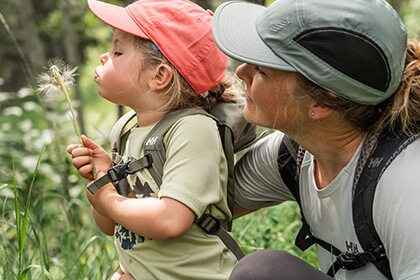

How to pack a backpack for hiking
April 21, 2023
Update: February 29, 2024
2 min read
The way you pack your backpack can make all the difference to your experience on the trail. Learn how to set yourself up for success with these steps on how to pack a hiking backpack.
Video: how to pack your backpack efficiently
explore helly hansen backpacks
Pack your backpack effectively
The key to effective packing starts with some pre-planning. If you love lists, this is your moment! Write down everything you plan to bring.
Review, reduce, remove
Gather each item and lay everything out on a flat surface.
Review: check that you have all the essentials.
Remove: it's time to part ways with your nice-to-haves and focus on those must-haves.
Reduce: try to lighten the load. Day hikers, do you really need that sleeping mat or could a sit pad do the job? Backpackers, do you know how to use everything in that first-aid kit or could you take a few bits out?
Sort by weight and use-case
Pack your backpack in the right order
Reduce strain on your back and distribute the weight evenly by packing in this order:
A. Lightweight items at the bottom
Place your group A items at the bottom of your bag, starting with your sleeping bag. Fill in the gaps around it with other items from this group. This will create a stable base to support the heavier items and prevent you from feeling weighed down on the trail.
B. Heavy items closest to the back panel
Add your group B items to the middle of your backpack, closest to the back panel, ensuring they are balanced from side to side. This spot is perfect for your tent and extra water (like a hydration bladder). By keeping most of the weight close to your center of gravity, your pack will be more stable and easier to carry.
C. Medium-weight and bulky items closest to the front
Next, add your group C items. Place these in the middle of your pack, closer to the front, and on top of the heavy items. Make sure to utilize all available space. If you're bringing cooking pots, use them to store food and utensils.
D. Easy-access items in the top lid and outside pockets
Finally, store your group D items in the top lid and any external pockets. Remember, these are the things you want to have close-to-hand while you're hiking. If your pack has a hip belt pocket, this is a great spot for your phone or snacks.
Five bonus tips
- Use packing organizers: stuff sacks, packing cubes or compression sacks are good examples.
- Prepare for changing weather: use waterproof/ ziplock bags to keep your clothing, electronics and essentials dry.
- Keep sharp objects away from your hydration bladder (you don't want it to burst!).
- Maximize the main compartment: split your tent into its separate components and store your utensils in cooking pots.
- Maximize the external storage: use the outside straps to secure trekking poles.
Want to know more?
If you found this helpful, check out the rest of our backpack mini-series here:
Explore Helly Hansen backpacks


May 27, 2025 4 min read
Hiking for beginners
New to hiking? Learn step-by-step how to enjoy the outdoors confidently with these beginner-friendly advice.

March 05, 2025 4 min read
Everything You Need To Know About UPF Clothing
Learn all about UPF clothing, how it works, and why it’s essential for sun protection. Discover care tips and answers to FAQs like "Does UPF wash out?"